Why We Fight: Divide and Conquer is a american film of genre War directed by Frank Capra released in USA on 2 january 1943 with Knox Manning
Why We Fight: Divide and Conquer (1943)
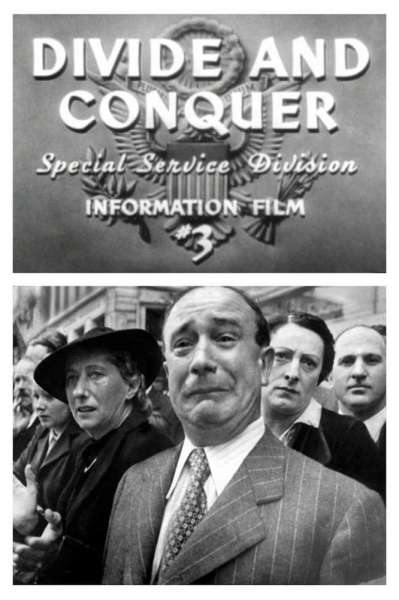
If you like this film, let us know!
Released in USA 2 january 1943
Length 57minutes
OriginUSA
Themes Documentary films about war, Documentary films about historical events, Political films, Documentary films about World War II
Rating71%










Divide and Conquer (1943) is the third film of Frank Capra's Why We Fight propaganda film series, dealing with the Nazi conquest of Western Europe in 1940.
The film begins immediately after the fall of Poland. Of the two major Western Allies of 1940, the United Kingdom is first to be mentioned. The role of the Royal Navy in blockading Germany is highlighted, in that it means that Germany must overcome British resistance in order to clear the way for its world conquest.
Hitler's treachery towards the small neutral countries of Europe is exposed - to Denmark: "We have concluded a non-aggression pact with Denmark" - to Norway: "Germany never had any quarrel with the Northern States and has none today" - to the Netherlands: "The new Reich has always endeavored to maintain the traditional friendship with Holland" - and to Belgium: "The Reich has put forth no claim which may in any way be regarded as a threat to Belgium". These quotes are repeated after the conquest of each of these countries is shown.
The first targets of the Nazis in 1940 were Denmark and Norway. Nazi interest in Norway is described in terms of Germany's desire to use Norway's fjords as U-boat bases, and to use airfields in Norway for a bomber attack on the British naval base at Scapa Flow. After Hitler's surprise invasion of Denmark is briefly mentioned, the film accuses the Nazis of using Trojan Horse ships - designed to look like merchant ships but concealing troops, tanks and artillery guns - as a way of seizing control of all of Norway's ports. The role of Norwegian traitors such as Vidkun Quisling in aiding the Nazi conquest of Norway is also emphasized. At the end of the section on Norway, Hitler is likened to gangster John Dillinger and Nazi-occupied Norway is portrayed as the northern claw of a giant pincer movement aimed against Britain. The conquest of France would provide the southern claw.
The film's story of France begins in 1914 at the Battle of the Marne. The offensive-minded spirit of French general Ferdinand Foch is emphasized: "My right is driven in, my center is giving way, the situation is excellent, I attack!" (the original in French is displayed on-screen). The film then goes on to describe the defensive orientation of 1930s France, exemplified by the Maginot Line. This is explained as being primarily due to the 6 million casualties which France suffered in World War I, but also due to factors including Nazi fifth column activities, political corruption and greedy vested interests.
Possible routes for a German invasion of France are discussed: the 1870 attack through Alsace-Lorraine and the 1914 attack through Belgium. The French, believing the Maginot Line impregnable, expect the German attack to come through Belgium, as in 1914. The French order of battle in 1940 is described: 78 divisions along the border with Belgium, 15 in the Maginot Line, 10 divisions facing Benito Mussolini's forces in Italy and 3½ divisions as a safeguard against Spain. The British Expeditionary Force contributed an additional 10 divisions.
The important role of paratroopers in the conquest of the Netherlands is covered, as is the fact that the Germans easily defeated Belgian resistance at Fort Eben-Emael knowing the best method of attack after extensive practice on an exact copy of the fortress built in occupied Czechoslovakia. Special attention is also paid to Nazi atrocities, such as the Rotterdam Blitz after the surrender of the city and Nazi attacks on villages and small towns (designed to choke roads with refugees and thus impede the Allied troop movements).
It is then mentioned that the Nazis' attack on Belgium and the Netherlands was a feint to distract from the main attack through the Ardennes, where the Allies least expected it. A U.S. military officer shows an animation which demonstrates the German blitzkrieg technique - tanks form the front spearhead, while infantry spill off from the sides to form solid walls, thus protecting the center of the column through which trucks pass to supply all forces involved.
Synopsis
Ne désirant pas s’engager sur deux fronts à la fois, Hitler s’est concentré jusqu’alors sur le front de l’Est en réfutant toute hostilité envers la France et la Grande-Bretagne. Mais une fois celui-ci stabilisé, il lance l’offensive à l’Ouest contre les Pays-Bas, la Belgique et bientôt la France…Actors

Knox Manning
(Narrator)
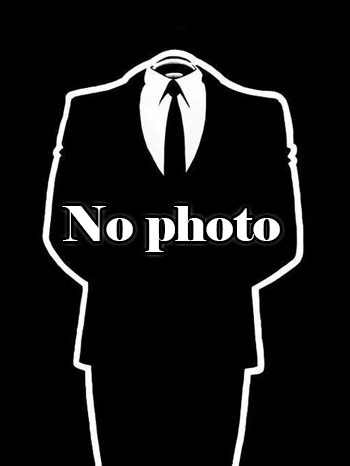
Murray Alper
(Bit Role)

Monte Blue
(Bit Role)

Ann Codee
(Bit Role)
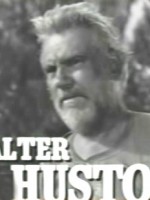
Walter Huston
(Narrator)
Comments
Leave comment :
Suggestions of similar film to Why We Fight: Divide and Conquer
There are 108 films with the same actors, 90 films with the same director, 12846 with the same cinematographic genres (including 323 with exactly the same 2 genres than Why We Fight: Divide and Conquer), 8197 films with the same themes (including 442 films with the same 4 themes than Why We Fight: Divide and Conquer), to have finally 70 suggestions of similar films.If you liked Why We Fight: Divide and Conquer, you will probably like those similar films :
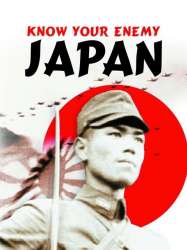
Know Your Enemy: Japan (1945)
, 1h3Directed by Joris Ivens, Frank Capra
Origin USA
Genres War, Documentary, Historical
Themes Documentary films about war, Documentary films about historical events, Political films, Documentary films about World War II
Actors John Beal, Howard Duff, Walter Huston, Knox Manning
Rating59%





Un remarquable documentaire cinématographique sur la montée du militarisme japonais, malgré les outrances inhérentes à tout film de propagande et à la xénophobie ambiante liée à la guerre.
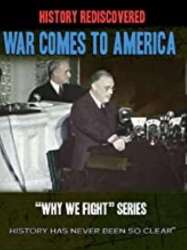
War Comes to America (1945)
, 1h10Directed by Frank Capra, Anatole Litvak
Origin USA
Genres War, Documentary
Themes Documentary films about war, Documentary films about historical events, Political films, Documentary films about World War II
Actors Walter Huston, Lloyd Nolan
Rating67%





Face à la menace d’une perte de liberté, les États-Unis entrent en guerre illustre comment l’Amérique est passée de l’isolationnisme à un engagement total.
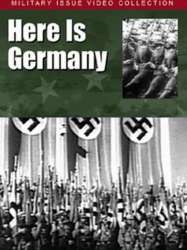
Here Is Germany (1945)
, 1hDirected by Frank Capra
Origin USA
Genres War, Documentary
Themes Documentary films about war, Documentary films about historical events, Political films, Documentary films about World War II
Actors Anthony Veiller
Rating62%





 , 54minutes
, 54minutesDirected by Frank Capra, Anatole Litvak, Anthony Veiller
Origin USA
Genres War, Documentary, Historical
Themes Transport films, Aviation films, Documentary films about war, Documentary films about historical events, Documentary films about technology, Political films, Documentary films about World War II
Actors Anthony Veiller, Frieda Inescort, Walter Huston
Rating70%





The narrator describes the fall of France, leaving Britain almost defenceless. British forces are vastly outnumbered, but the British people are calm. The narrator explains that this is because in a democracy the people as a whole are involved in the decision to fight. Hitler's masterplan to subjugate Britain is described. Hitler begins by attacking convoys and ports, but fails to destroy them. The RAF are outnumbered "6 - 8 - 10 to one", but knock out far more planes than the Germans do. Bailed out British pilots are also able to return to the air, but German pilots are lost. Unlike the Dutch and Polish airforce Britain does not "make the mistake of bunching its planes on the runways".

Tunisian Victory (1944)
, 1h15Directed by John Huston, Frank Capra, John Boulting, Roy Boulting, Hugh St Clair Stewart
Origin United-kingdom
Genres War, Documentary
Themes Documentary films about war, Documentary films about historical events, Political films, Documentary films about World War II
Actors Leo Genn, Burgess Meredith, Bernard Miles
Rating65%





 , 1h23
, 1h23Directed by Frank Capra, Anatole Litvak
Origin USA
Genres War, Documentary, Historical
Themes Documentary films about war, Documentary films about historical events, Political films, Documentary films about World War II
Actors Walter Huston, Anthony Veiller, Nikolai Cherkasov
Rating70%





Ce film de propagande américain souligne le besoin d'une alliance russo-américaine contre les nazis.
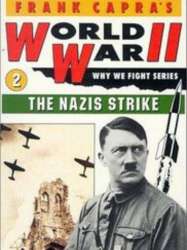 , 41minutes
, 41minutesDirected by Frank Capra, Anatole Litvak
Origin USA
Genres War, Documentary
Themes Documentary films about war, Documentary films about historical events, Political films, Documentary films about World War II
Actors Walter Huston
Rating69%





Le film présente et analyse la stratégie allemande pour conquérir l’espace vital hitlérien. Il met en évidence toutes les bassesses orchestrées par Hitler pour étendre petit à petit son empire, malgré les pactes de non-agression signés avec la plupart des pays européens.
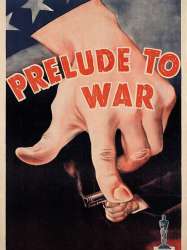
Why We Fight: Prelude to War (1942)
, 53minutesDirected by Frank Capra, Anatole Litvak
Origin USA
Genres War, Documentary, Historical
Themes Politique, Documentary films about war, Documentary films about historical events, Political films, Documentary films about World War II
Actors Walter Huston
Rating69%





In an edit added to the film before public release, a comment by Henry L. Stimson, the Secretary of War at the time, was quoted to create trust with the audience, “the purpose of these films is to give factual information as to the causes, the events leading up to our entry into the war and the principles for which we are fighting.”
 , 1h5
, 1h5Directed by Frank Capra, Anatole Litvak
Origin USA
Genres War, Documentary
Themes Documentary films about war, Documentary films about historical events, Political films, Documentary films about World War II
Actors Anthony Veiller, Walter Huston
Rating69%





En envahissant la Chine, le Japon espère ensuite conquérir l’Asie toute entière. Le film utilise de nombreuses images du documentaire de Joris Ivens 400 Millions, réalisé en 1938.

Your Job in Germany (1945)
Directed by Frank Capra, Anatole Litvak
Origin USA
Genres Documentary
Themes Documentary films about war, Documentary films about historical events, Political films, Documentary films about World War II
Actors Dana Andrews
Rating51%





Il avait été conçu pour préparer les troupes américaines entrées en Allemagne après le débarquement à la mise en place de la dénazification. Le commentaire du film, volontiers schématique et virulent, était tout entier préoccupé par le danger que pouvaient courir les jeunes soldats au contact d’un pays dont toute l’histoire prouvait le bellicisme et l’immaturité politique : en chaque Allemand ordinaire sommeillait un ancien ou futur nazi, d’où la nécessité d’être constamment sur ses gardes et de ne pas entretenir avec la population des liens de trop grande proximité. Repris au cours de l’année 1945 par les frères Warner sous le titre Hitler Lives ?, le film remporta l’Oscar du meilleur documentaire de court métrage.
 Connection
Connection
